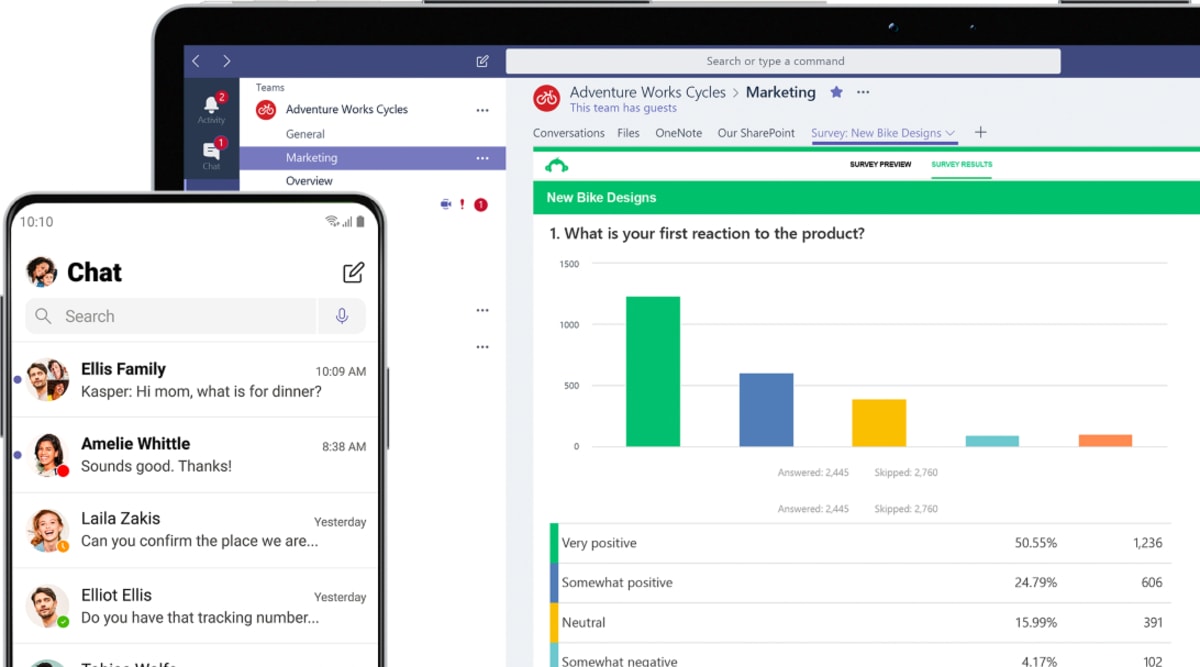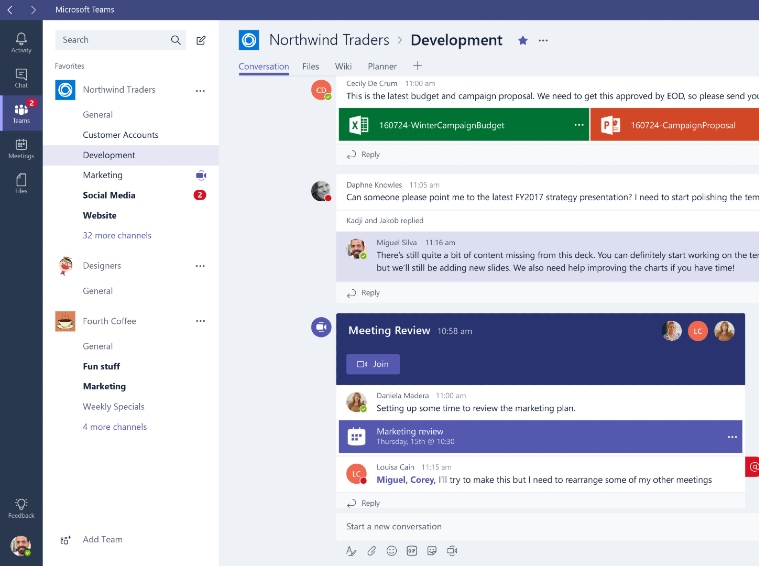
[ad_1]
 Microsoft has seen a huge uptake for Teams during the coronavirus pandemic in India. (Image credit: Microsoft)
Microsoft has seen a huge uptake for Teams during the coronavirus pandemic in India. (Image credit: Microsoft)
“If you look at the future of work, we believe that the future of work will be hybrid.” Samik Roy, Country Head, Modern Workplace at Microsoft India, is clear about how the pandemic is impacting the future of our workplaces. “There will be offices, there will be these meeting rooms, there will be boardroom meetings that will take place the way they do before, but there will be a large part of these, which will be happening in the virtual world where people will continue to log in and go all the way back,” Roy told indianexpress.com in an interview.
The pandemic is helping organisations understand the power of the cloud, he says. “In the past few months, what Covid-19 has ensured is that that these organisations today use technology. These were organisations that were either not using technology or using old technology. Today they have moved to the cloud,” Roy said. He further said more organisations now realise that if they don’t adopt technology, their businesses won’t function.
Roy said the coronavirus pandemic has changed the way we work in offices, which could impact corporate culture. “It’s very difficult to work in silos in an environment like this,” he says. Roy predicts that organisations have to get rid of silos and adopt collaborative tools like Microsoft Teams to better engage with teams and achieve higher levels of efficiency and productivity.
“People are seeing the value in Microsoft Teams,” explains Roy. He says Teams is not a regular video calling app; instead, it is the “hub of teamwork.” “We realised that people are choosing Microsoft Teams, not because of just video calling or just communication with someone, but because they can do a lot more in a single place,” he says. “And more importantly, it’s about the security within teams, along with teams and the security around teams, which is giving them that comfort factor as far as usage is concerned.”
 Roy heads the modern workplace, which includes Microsoft Teams Teams at Microsoft India. (Image credit: Linkedin/Samik Roy)
Roy heads the modern workplace, which includes Microsoft Teams Teams at Microsoft India. (Image credit: Linkedin/Samik Roy)
It’s not just traditional organisations like TCS, L&T, Reliance, Mahindra & Mahindra that are using Microsoft Teams, but several educational institutes like Amity group of institutions and The British School as well as hospitals such as Fortis. Roy says several government departments recently embraced remote working through Microsoft Teams. In April, Microsoft announced that Teams had 75 million monthly active users globally.
Perhaps one of the biggest shifts that Microsoft has seen during the coronavirus pandemic is how universities and schools are adopting distance learning. “We are seeing that many state governments are actually automating all state universities and state schools to come to these online platforms and use that technology. It’s taken the entire industry forward by a few years,” he said.
Debunking the myth that only educational institutions and schools in big cities adapted to remote learning due to the coronavirus pandemic and social distancing regulation, Roy says he has seen schools in rural parts of the country that moved to online classes, despite limited access to the internet and lack of infrastructure.
 Microsoft Teams integrates with Microsoft Word, Excel, PowerPoint and other Office apps. (Image credit: Microsoft)
Microsoft Teams integrates with Microsoft Word, Excel, PowerPoint and other Office apps. (Image credit: Microsoft)
He cited the example from Punjab’s Phagwara, where a school distributed smartphones to students so that they can attend online classes and do online assessments. Roy said it wasn’t easy for the principal to reorient the school and convince teachers to rearrange themselves and prepare parents and students to understand the pros of remote learning. But over a period of time, the productivity and the ability to reach out to more students through remote learning started to sink in within the system.
Roy said Microsoft is helping organizations overcome the fear of technology adoption and making sure they are comfortable in using Teams in India. “We created specific partner ecosystems who are very well equipped with capacity and capability to implement Microsoft Teams quickly to train these people to create the support mechanisms,” he said.
In India, Roy says people started using Microsoft Teams only for chat but gradually they realised it is more than that. “People have started using Teams as a platform, which means that you’re not using Teams only for meetings and chatting but you are using Teams for co-authoring, sharing of files, sharing of documents, and creating applications.”
Roy said a lot of first-line workers prefer a device with less than 10.1-inches and which is why the mobility usage of Teams has increased over the past few months. “The initial phase was about remote working but we took a level up and introduced remote anywhere, which means any device will be secured and can be used in any industry with Microsoft Teams,” he said, adding how features like Walkie Talkie, task management and rosters are unique to Teams.

For all the latest Technology News, download Indian Express App.
© IE Online Media Services Pvt Ltd
[ad_2]
Source link